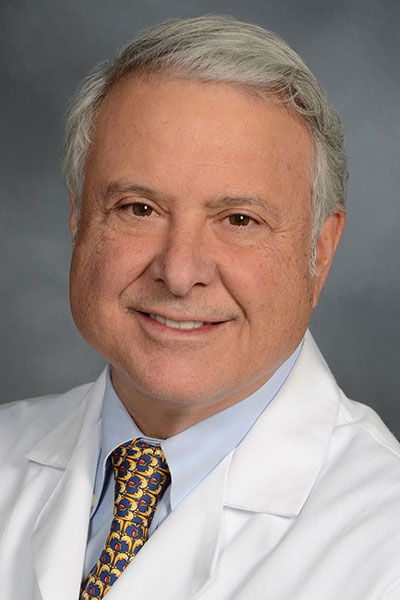Weight management should be a primary goal of diabetes treatment, alongside glycemic management. Effective weight management delays the progression of prediabetes to type 2 diabetes, yields significant benefits in treating type 2 diabetes, improves glycemia levels, reduces the need for glucose-lowering medications, and mitigates other obesity-related health risks.

“One of the real powers of treating obesity is that it reduces a lot of risks at the same time,” said Louis J. Aronne, MD, DABOM, the Sanford I. Weill Professor of Metabolic Research at Weill Cornell Medical College, and Director of the university’s Comprehensive Weight Control Center, during the symposium, Standards of Care in Overweight and Obesity 2025 Updates.
Approximately 40% of adults and 20% of children in the United States are living with obesity. Institutions, such as the American Diabetes Association® (ADA), the World Health Organization (WHO), and the American Medical Association, classify obesity as a disease. Yet, a dissonance remains between this acknowledgment and the proportion of patients who consult their medical provider to treat the condition.
According to recent data, more than 90% of patients living with overweight perceive their condition and want to lose weight. However, less than 4% contact their doctor for treatment. Similarly, 86% of adults with type 2 diabetes receive pharmacotherapy to treat the disease, yet only 2% of adults who meet the recommendations for pharmacotherapeutic interventions for obesity receive them.
“There are really missed opportunities here,” said Kim Gudzune, MD, MPH, Chief Medical Officer for the American Board of Obesity Medicine Foundation, and Chair of the Professional Practice Committee of the Obesity Association™, a division of the ADA. “People living with obesity are interested in care, and we need to think about how to actually get them that care.”
The symposium, led by Drs. Gudzune and Aronne during the 85th Scientific Sessions, provided an overview of the Obesity Association’s newly developed Standards of Care in Overweight and Obesity, a tool they hope will offer unified guidance and propose realistic solutions to provide clinicians, researchers, policy makers, and others with the components of obesity care, general treatment goals, and tools to evaluate the quality of care.
“Establishing a standard of care should help us to raise the visibility of obesity treatment,” said Dr. Aronne.

The impact and utility of such a resource in treating overweight and obesity are difficult to overstate. According to data shared by Dr. Gudzune, less than 10% of primary care physicians (PCPs) use guidelines to inform obesity treatment decisions. She also highlighted the minimal education and training physicians often receive on providing care for patients living with obesity, which can lead to breakdowns in communication and other consequences for the patient and their relationship with their PCP or other care team members.
Avoiding perceived weight bias and stigma is vital for the health of the patient-physician relationship and critical for patients’ weight loss recovery, as the negative feelings associated with these perceptions often contribute to the cyclical nature of the disease of obesity. Stress caused by bias and stigma can lead to negative eating and physical activity behaviors, as well as physiological reactivity, leading to weight gain. These biases can also lead to health care service avoidance, which likely accounts for some of the low treatment rates for obesity.
One recommendation to combat weight bias and stigma in the new Standards of Care in Overweight and Obesity is the development and implementation of educational programs within medical curricula that emphasize the biological, psychological, and social determinants of obesity, and to ensure continuous professional development opportunities are available to challenge existing biases and equip health care professionals with the skills to deliver empathetic, person-centered care.
Such training will likely enhance communication and collaboration. Health care professionals are encouraged to use person-first language and engage in open, respectful dialogues with patients living with obesity. In addition, implementing collaborative care models that employ interprofessional teams to address the complex needs of people living with obesity can foster a holistic approach to treatment and reduce weight bias.
“It’s you and the patient against the disease. Remember that,” Dr. Aronne said. “You’re not cross-examining someone for the crime of having the disease of obesity.”
Weight bias and stigma can also manifest through institutional forms in the clinical environment. The updated standards of care recommend assessing health care facilities to ensure they support and accommodate people living with obesity. Such assessments could lead to modifications for specialized medical equipment or clinic furniture, improving patient experiences and comfort, and encouraging more active patient participation in treatment.
While many recommendations in the updated Standards of Care in Overweight and Obesity focus on ensuring an optimal environment for everyone, Dr. Gudzune also highlighted that the guidelines allow care teams to tailor treatment recommendations for people living with obesity.
“It’s not always a one-size-fits-all approach with this,” she said. “We really need to think about individualizing to specific needs.”
On-demand access to recorded presentations from this session will be available to registered participants of the 85th Scientific Sessions through August 25.

Watch the Scientific Sessions On-Demand after the Meeting
Extend your learning on the latest advances in diabetes research, prevention, and care after the 85th Scientific Sessions conclude. From June 25–August 25, registered participants will have on-demand access to presentations recorded in Chicago via the meeting website.

